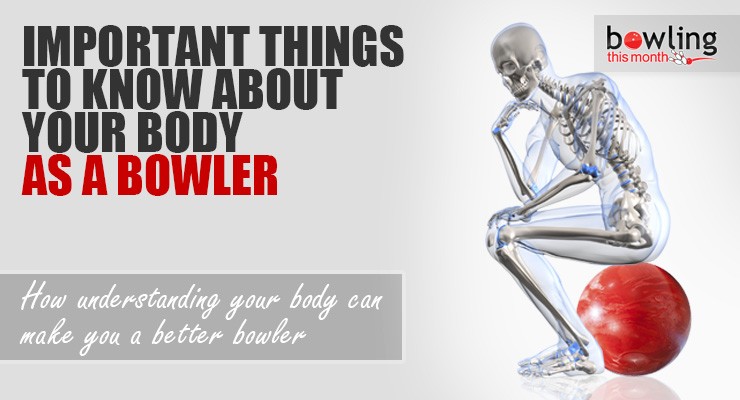Article Contents
- 1. About Eishi Kidera
- 2. About Masaru Arimoto
- 3. Where is the origin of arm movement?
- 4. The function of the upper arm
- 5. Pelvis tilt
- 6. Conclusions
Note: This article is only available to Bowling This Month subscribers.
As many of our long-time readers know, one of Bowling This Month’s primary goals right from the start has been to push bowling technical research and education to new levels and into new areas. One such area is biomechanics. In fact, as far back as the late 1990s, BTM’s founder Bob Summerville advocated for advanced research in biomechanics for our sport. At that time, bowling-specific biomechanical research was significantly behind that of many other sports.
Fortunately, significant progress has been made in this area over the years, with BTM and its contributors playing significant roles. Bowlers and coaches who study the work of USBC Gold coach Joe Slowinski, for example, now have insights and understandings into the movement patterns of an effective bowling delivery that just weren’t available 20 years ago.
We’re very excited today to continue our journey by bringing you an exciting new article that is a collaboration between Mr. Eishi Kidera and Mr. Masaru Arimoto, two very knowledgeable authors from Japan. Mr. Kidera is a professor at Kyushu Kyoritsu University with a focus on biomechanical theory and Mr. Arimoto is a well-known professional bowling coach in Japan. Their full biographies are below.
Mr. Kidera’s and Mr. Arimoto’s article covers a number of interesting concepts that tie the anatomy and function of the human body back to the elements of an efficient bowling game. Study their text and accompanying images, perform the various hands-on experiments, and think about how all of this applies to your bowling game. If you do, you’ll definitely improve your understanding of some of the cause and effect that happens in a modern bowling delivery. And, more importantly, you’ll certainly have some takeaways on how to use this knowledge to improve your own technique.
While Mr. Kidera and Mr. Arimoto both fluently speak bowling and biomechanics, they don’t speak English. The translation of this article from Japanese to English was performed by Ms. Sumie Tanaka. We would like to thank her for her tireless efforts in translating, answering all of our questions, and collaborating with the authors. For those BTM readers who might not be aware, Ms. Tanaka has for several years translated some of BTM’s articles into Japanese for the benefit and education of Japanese-speaking bowlers. She also publishes a YouTube channel where she has interviewed many current and past stars of our sport to gather their thoughts on the current state of competitive bowling. She’s collected a lot of great comments and viewpoints and we certainly hope you’ll visit her page and listen to her interviews.
About Eishi Kidera
 Eishi Kidera is an associate professor in the faculty of sports department at Kyushu Kyoritsu University. He specializes in kendo, a Japanese art of fencing. With the study kendo as a start, he has deepened exchanges with players and coaches in other area of sports and has developed his own biomechanical theory. Currently, he is actively writing, coaching, and conducting seminars with sports related topics such as bowling, baseball, soccer, swiming, and others. He has published many books about sports in the past. His homepage is www.namiashi.net.
Eishi Kidera is an associate professor in the faculty of sports department at Kyushu Kyoritsu University. He specializes in kendo, a Japanese art of fencing. With the study kendo as a start, he has deepened exchanges with players and coaches in other area of sports and has developed his own biomechanical theory. Currently, he is actively writing, coaching, and conducting seminars with sports related topics such as bowling, baseball, soccer, swiming, and others. He has published many books about sports in the past. His homepage is www.namiashi.net.
About Masaru Arimoto
 Masaru Arimoto is a professional coach well known in Japan. He has coached many elite bowlers, such as JPBA pro Shota Kawazoe and Japan national team member Shogo Wada. He has written articles for Japan Bowling Magazine and his article “Analytics of PBA style and comparison of US/Japan bowling differences” had a huge impact among professional and amateur bowlers. His coaching is now called “Arimoto Method” and he travels all around Japan to spread his coaching philosophy to his students.
Masaru Arimoto is a professional coach well known in Japan. He has coached many elite bowlers, such as JPBA pro Shota Kawazoe and Japan national team member Shogo Wada. He has written articles for Japan Bowling Magazine and his article “Analytics of PBA style and comparison of US/Japan bowling differences” had a huge impact among professional and amateur bowlers. His coaching is now called “Arimoto Method” and he travels all around Japan to spread his coaching philosophy to his students.
This article represents the first of what will hopefully be many collaborations in bringing the best of what’s going on in the rest of the bowling world to BTM’s English-speaking readers. We hope you enjoy it.
Where is the origin of arm movement?
In the sport of bowling, a bowler holds a heavy ball in his hand and swings it with his arm. When that happens, where does the arm move from? Many believe that arm movement starts from the shoulders. That is a false perception.
Move your shoulders in many different directions. You will notice your shoulder joints are not fixed in one place and they actually move WITH your arms. So, where does arm movement originate from?
While touching your clavicle (that’s the bone between #1 and #2 in the illustration below), move your shoulder. Your clavicle moves with your shoulder. But, if you touch where your clavicle meets your breastbone (sternum) and move your shoulder, you don’t feel any movement. This joint where clavicle and breastbone meet is called ...
Already a premium member? Click here to log in.


